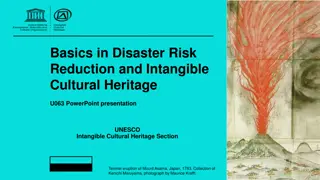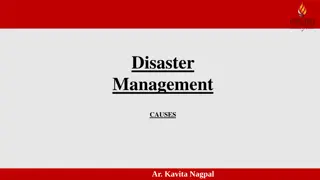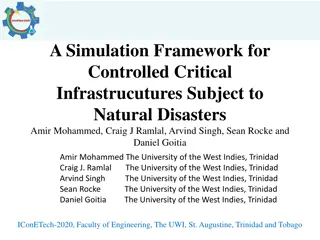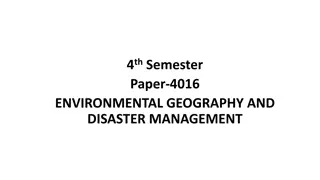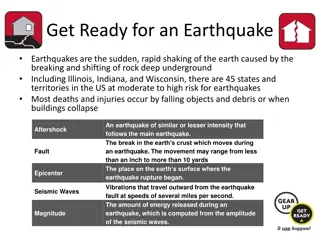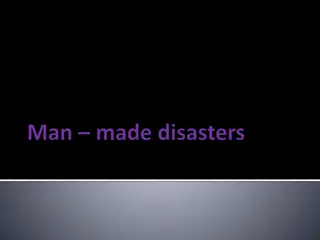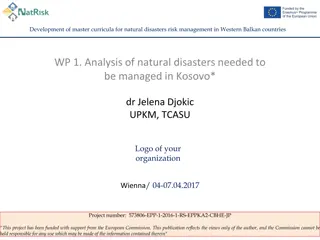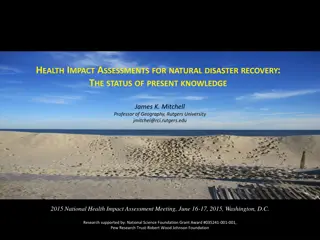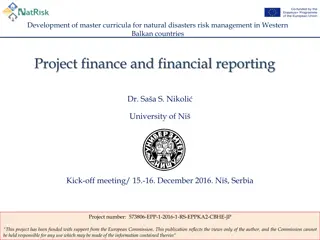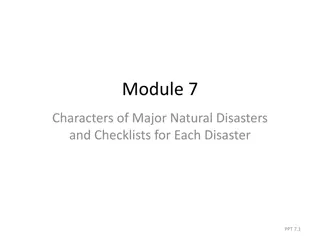
Understanding Earthquakes: Causes, Effects, and Magnitude
Learn about earthquakes, a natural hazard caused by the sudden movement of rocks along faults in Earth's crust. Discover how energy is released as seismic waves, how earthquakes are measured using the Richter scale, and the role of seismographs in monitoring these events.
Download Presentation

Please find below an Image/Link to download the presentation.
The content on the website is provided AS IS for your information and personal use only. It may not be sold, licensed, or shared on other websites without obtaining consent from the author. If you encounter any issues during the download, it is possible that the publisher has removed the file from their server.
You are allowed to download the files provided on this website for personal or commercial use, subject to the condition that they are used lawfully. All files are the property of their respective owners.
The content on the website is provided AS IS for your information and personal use only. It may not be sold, licensed, or shared on other websites without obtaining consent from the author.
E N D
Presentation Transcript
Earthquakes are a natural hazard caused by the sudden and rapid movement of a large volume of rock. The shaking and destruction cause by earthquakes are the result of slippage along fracture s in Earth s crust called faults.
The origin of an earthquake occurs at the focus. The point at the surface directly above the focus is called the epicenter. During earthquakes, a large amount of energy is released as heat and seismic waves- a form of elastic energy that causes vibrations.
4 layers (inner, outer, mantle, crust) Crust and top of mantle (puzzle like) slowly slide past one another- tectonic plates Edges are plate boundaries o Made up of faults (Earthquakes occur at faults) Edges get stuck while plates keep moving Once plates move far enough apart, the edges unstick on one of the faults .
Every earthquake is given a number. This number describes the magnitude (strength) of the earthquake. The Richter scale of magnitude is used to calculate the strength of an earthquake.
Seismographs are instruments that record the vibrations of the earth during an earthquake. Seismographs are also important for locating an earthquake.
Faults are stuck, blocks keep moving The energy that would normally cause blocks to slide past one another is being stored up Once they unstick, all the energy stored up is released Energy radiates in all directions creating seismic waves Seismic waves shake the earth as they travel through it (like ripples in a pond)
There are two main groups of seismic waves: 1. Surface waves- travel along the outer part of Earth. 2. Body waves- travel through Earth s interior. They are divided into two types called P waves and S waves.
Primary (P waves) are push-pull waves. They push and pull rocks in the direction the wave is traveling. Fastest waves Go through solids and liquids
Secondary (S waves) shake the particles at right angles to their direction of travel. Move in a side-to-side motion. Slower than P waves. (Slinky Demonstration)
DROP, COVER, AND HOLD ON! -Drop under something sturdy, hold on, and protect your eyes by pressing your face against your arm. -Stay indoors until the shaking stops. -Stay away from windows.
Instruments are installed in buildings, bridges and other large structures in earthquake-prone areas to measure their response to earthquakes. https://www.youtube.com/watch?v=h3UVMHjvFWs



